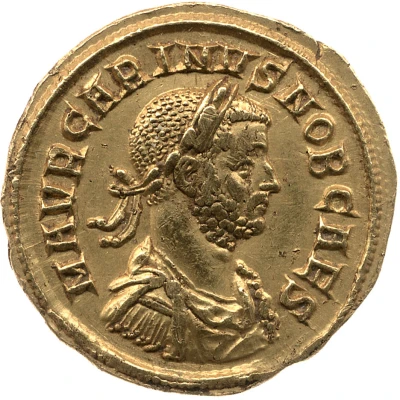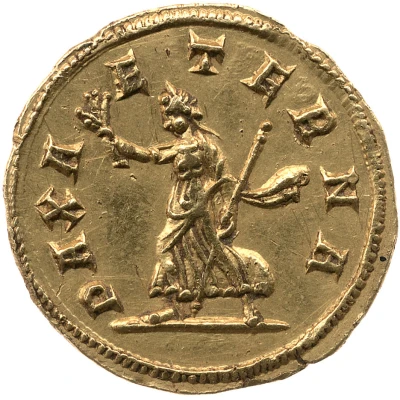Aureus - Carinus as Caesar VENERI VICTRICI; Venus
| Gold | - | - |
| Issuer | Rome › Roman Empire (27 BC - 395 AD) |
|---|---|
| Caesar | Carinus (Marcus Aurelius Carinus) (282-283) |
| Emperor | Carus (Marcus Aurelius Carus) (282-283) |
| Type | Standard circulation coin |
| Years | 282-283 |
| Value | Aureus (25⁄2) |
| Currency | Antoninianus, Reform of Caracalla (AD 215 – 301) |
| Composition | Gold |
| Shape | Round (irregular) |
| Technique | Hammered |
| Demonetized | Yes |
| Updated | 2024-10-05 |
| Numista | N#296342 |
|---|---|
| Rarity index | 100% |
Reverse
Venus, draped, standing left, holding Cupid in right hand and apple in left hand.
Script: Latin
Lettering: VENERI VICTRICI
Translation:
Veneri Victrici.
To Venus, the victorious.
Comment
Source:Online Coins of the Roman Empire (OCRE)
Interesting fact
The Aureus coin featuring Carinus as Caesar and bearing the image of Venus (VENERI VICTRICI) was minted during a time of significant economic and political change in the Roman Empire. The coin's gold content and high denomination made it a valuable and prestigious currency, reserved for important transactions and ceremonial purposes. However, the coin's production was not without controversy. The Roman Empire was facing economic strain due to excessive spending on military campaigns, public works, and lavish festivals. The debasement of the Roman currency, including the Aureus, was a common practice during this period, where the gold content was reduced and replaced with cheaper metals to increase the minting of coins. This led to inflation, which affected the purchasing power of the coin and the overall economy. Despite these challenges, the Aureus remained a symbol of wealth and power in Roman society.

